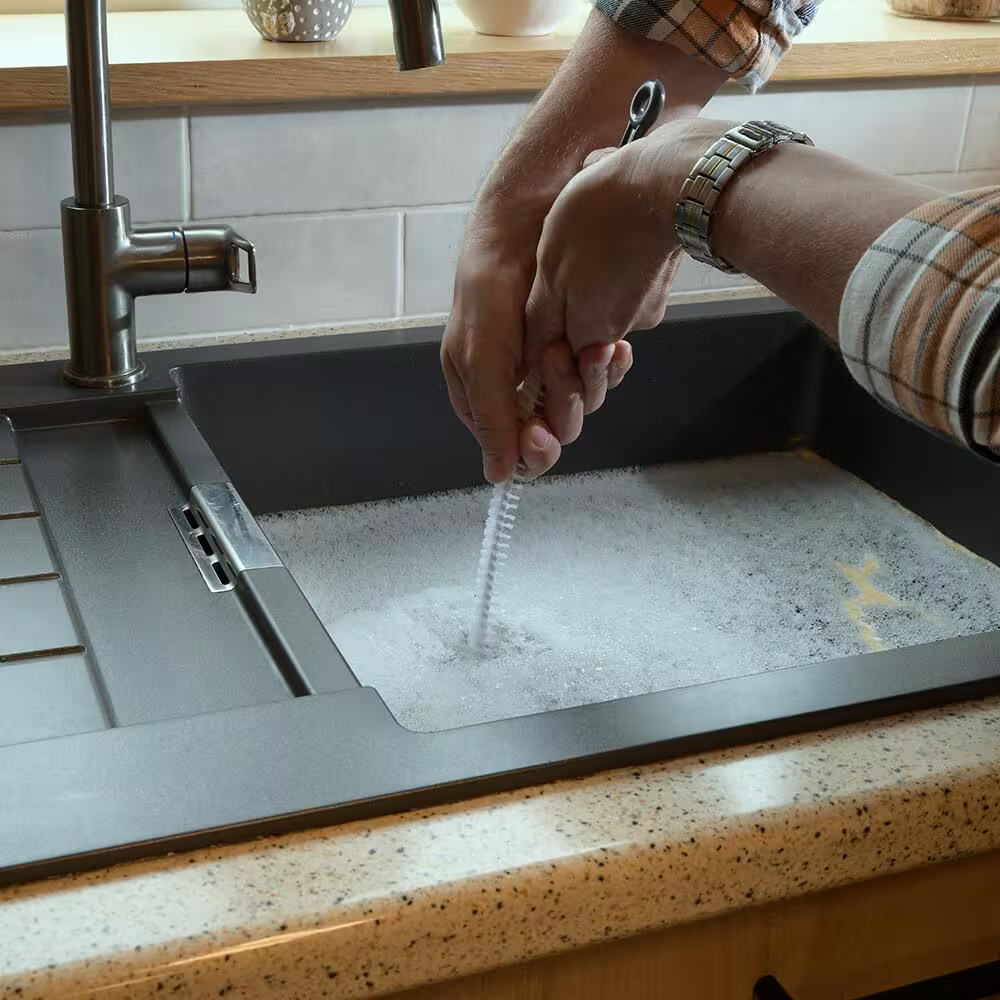Introduction to Bathroom Sink Cleaning
How to clean bathroom sink? A shiny bathroom sink can set the tone for a clean and welcoming bathroom. However, keeping it spotless is often a challenge due to frequent use and the buildup of soap scum, toothpaste splashes, and water spots. Understanding how to clean a bathroom sink efficiently will not only make your cleaning routine quicker but will also result in a more hygienic and inviting space. In the following paragraphs, we’ll cover the basics of bathroom sink cleaning, the supplies you’ll need, and a simple step-by-step guide that will leave your sink gleaming. Let’s dive into the art of maintaining a fresh and radiant bathroom sink.
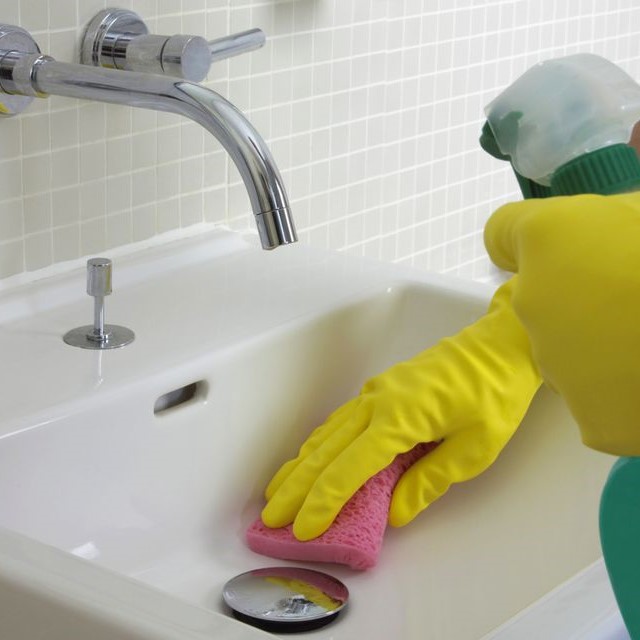 Essential Cleaning Supplies for Your Sink
Essential Cleaning Supplies for Your Sink
Before you tackle the task of making your bathroom sink shine, gather the right cleaning supplies. Here’s what you’ll need to perform a thorough clean:
Basic Cleaning Tools
- Soft Sponge or Cloth: Use these for wiping surfaces without scratching.
- Old Toothbrush: This comes in handy for scrubbing hard-to-reach areas.
- Microfiber Towel: For drying and polishing the sink after cleaning.
Cleaning Agents
- All-Purpose Cleaner: A versatile option for general cleaning.
- Glass Cleaner: Helps remove water spots on chrome fixtures.
- Baking Soda: Great for gentle scrubbing and removing tough stains.
Disinfecting Solutions
- Bleach: Use diluted bleach to sanitize the sink area.
- Rubbing Alcohol: This can disinfect and shine fixtures.
Specialized Products
- Lime and Rust Remover: This is essential if you have hard water issues.
Start with these supplies to ensure how to clean bathroom sink becomes an easy and effective task. Always remember to read the labels and follow the instructions for each cleaner to avoid damaging your sink’s finish. By having all necessary items on hand, you’re now ready to move on to the next step – the cleaning process itself.
Step-by-Step Guide to Cleaning the Sink
Cleaning your bathroom sink does not have to be a daunting task. Here’s a simple, step-by-step guide to help make your sink shine:
- Clear Out Any Clutter: Begin by removing all items from the sink area. This includes toiletries, soap dishes, and any other accessories.
- Rinse the Sink: Quickly rinse your sink with warm water. This will loosen any surface dirt and debris.
- Apply Cleaner: Use your all-purpose cleaner liberally around the sink basin. Spread it with your soft sponge or cloth.
- Scrub Gently: With light, circular motions, scrub the basin, the rim, and the faucet. Don’t forget the handles.
- Use the Toothbrush: Take the old toothbrush to clean hard-to-reach spots. Focus on faucet crevices and the drain.
- Rinse Again: Wash off all the cleaner with warm water until the surface is clean of suds.
- Disinfect: If necessary, use a diluted bleach solution or rubbing alcohol on the surface to disinfect.
- Dry and Polish: Wipe down everything with a microfiber towel. Buff fixtures with a little glass cleaner for extra shine.
Take these steps, and you will know how to clean bathroom sink effectively. Remember, regular cleaning makes the job quicker and easier over time.
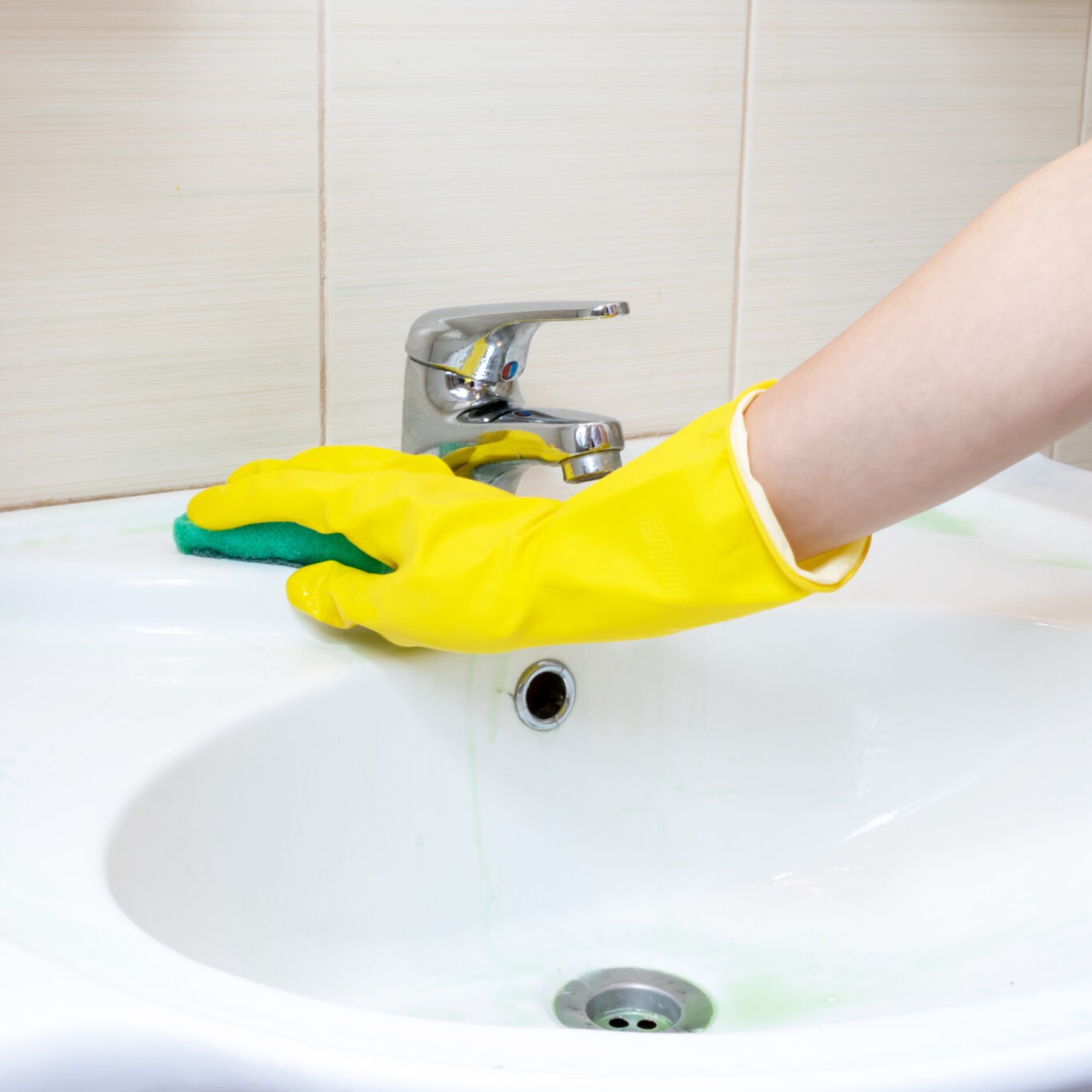 Tackling Tough Stains and Build-up
Tackling Tough Stains and Build-up
Sometimes, a basic cleaning routine might not tackle the tougher challenges in your bathroom sink. With time, some stains refuse to disappear, and build-up from various substances such as toothpaste, soap, and hard water can become a pain to remove. Here’s how to clean bathroom sink areas that have developed these tougher spots:
- Pre-Treat with Baking Soda: Sprinkle baking soda on the stains and dampen it with water to make a paste. Let it sit for a few minutes to break down the grime.
- Scrub with Elbow Grease: Use a non-scratch scrubbing pad to work the paste into the stubborn spots. Apply more pressure but keep your movements gentle to avoid damage.
- Attack with Vinegar: For limescale build-up around the faucet or drain, soak a cloth in white vinegar and wrap it around the area for an hour. Vinegar works well to dissolve the minerals.
- Rinse Thoroughly: After treating the sink with baking soda and vinegar, rinse the sink completely with warm water. This will help remove leftover cleaning residue.
- Apply Specialized Cleaners: If you’re dealing with rust or lime, use a designated lime and rust remover as directed on the product label. These are formulated for such specific issues.
Following these steps should help in removing most of the hard-to-deal-with stains and build-up in your bathroom sink. Incorporate them into your regular cleaning regime for the best results.
Natural Cleaning Solutions for Bathroom Sinks
When learning how to clean bathroom sink areas, consider natural cleaners. They can be effective and safe for the environment. Here are some natural solutions you can use:
- White Vinegar and Water Solution: Mix equal parts of vinegar and water in a spray bottle. This mix can tackle soap scum and water spots.
- Baking Soda Paste: Make a paste using baking soda and water. This can remove tough stains when applied and left for a few minutes.
- Lemon Juice: Lemon juice is a natural bleaching agent. Apply it to stains, let it sit, and then rinse away.
- Tea Tree Oil and Water Mix: Tea tree oil has natural disinfecting properties. Combine a few drops with water and spray on the sink to sanitize.
- Hydrogen Peroxide: Use it for its mild bleaching effect. It can brighten up the sink and kill germs.
Make sure to rinse the sink well after using these natural cleaners. They can keep your bathroom sink sparkling and reduce your exposure to harsh chemicals. Adopt these options for an eco-friendly approach to bathroom cleanliness.
Maintaining a Sparkling Sink with Regular Upkeep
Keeping your bathroom sink in top condition goes beyond the occasional deep clean. Regular upkeep is the secret to a sink that always sparkles. Here’s how you can maintain the shine with a few simple, yet effective practices:
- Wipe After Each Use: Quickly wipe the sink basin and faucet with a soft cloth after each use. This simple step prevents water spots and soap scum build-up.
- Daily Quick Cleans: Use an all-purpose cleaner to give your bathroom sink a fast wipe down every day. It takes just a minute and keeps the sink fresh.
- Weekly Detailed Cleaning: Once a week, follow the step-by-step guide for a more detailed clean. This will address any areas you might miss during quick cleans.
- Manage Drain Health: Regularly clear out the drain to prevent clogs. Use a mix of baking soda and vinegar for a natural cleaning method.
- Dry Thoroughly: Always dry your sink with a microfiber towel after cleaning. This step is crucial for avoiding water stains and maintaining a high shine.
- Keep Cleaning Supplies Handy: Having your cleaners, spones, and towels within easy reach encourages regular cleaning habits.
By following these tips, you’ll know exactly how to clean bathroom sink areas to keep them looking their best. Remember, consistency is key. A little bit of attention frequently can save you from harder work later on.
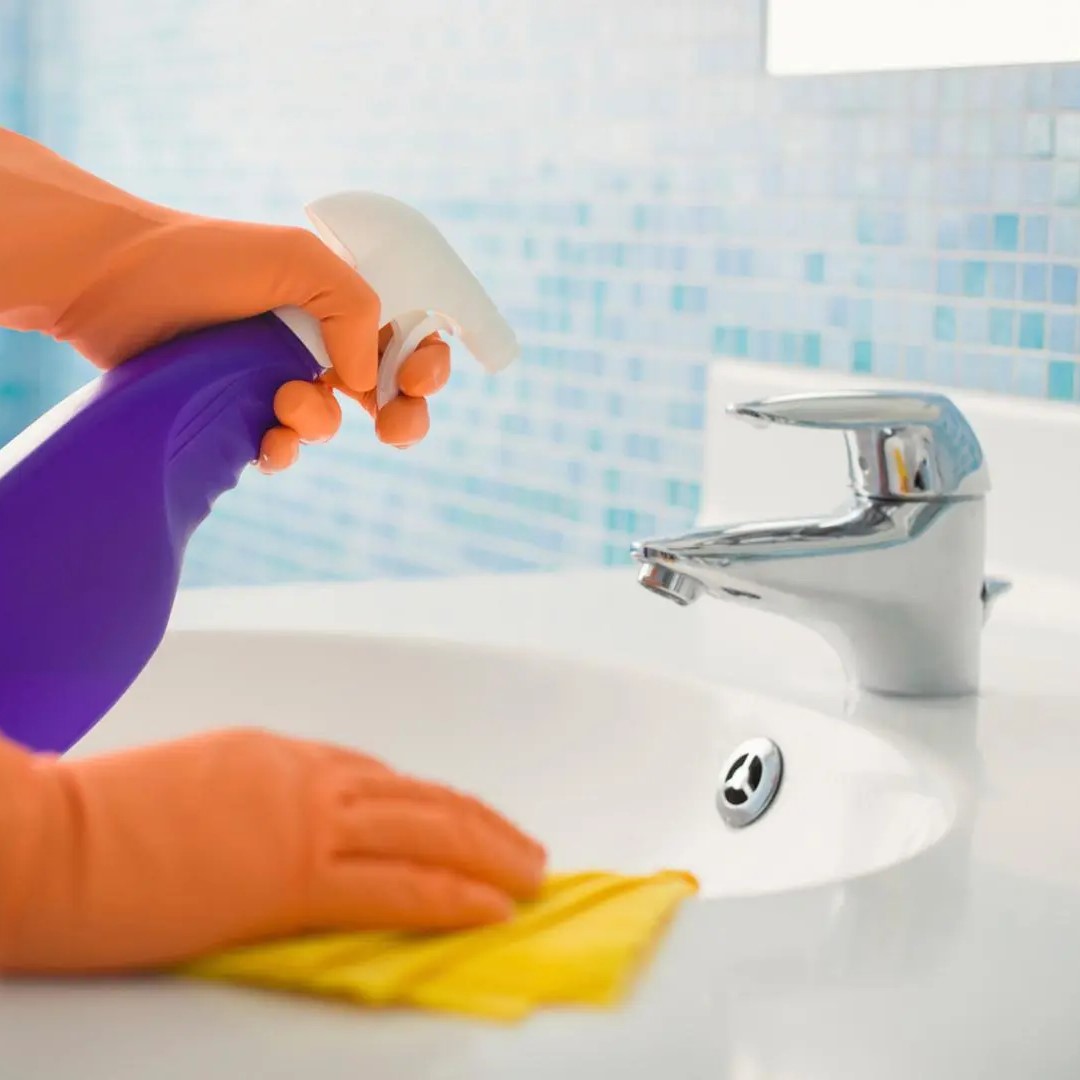 Tips for Preventing Sink Stains and Clogs
Tips for Preventing Sink Stains and Clogs
Keeping your bathroom sink free from stains and clogs not only keeps it looking great but also ensures its longevity. Here are some practical tips that will help you understand how to clean bathroom sink areas and keep them in pristine condition:
- Use a Drain Strainer: A simple strainer can catch hair and debris, preventing them from causing clogs.
- Hot Water Flush: Regularly flush your sink with hot water. This can help dissolve and wash away light buildup.
- Wipe Down after Use: Use a soft cloth or tissue to quickly wipe away soap, toothpaste, and other residues immediately after use.
- Avoid Harsh Chemicals: Chemical drain cleaners can damage the pipes. Opt for natural alternatives like vinegar and baking soda.
- Seal Grout Lines: If you have tiling around your sink, sealing the grout can prevent moisture build-up and mold.
- Soft Water Solutions: For homes with hard water, consider installing a water softener to reduce limescale deposits.
By following these tips regularly, you will minimize the risks of stains and clogs, keeping your bathroom sink clean and functional. Consistent prevention makes the cleaning process much more manageable and helps maintain the aesthetic of your sink area.
Addressing Specific Sink Issues: A Comprehensive Approach
Different sinks may present unique challenges that require tailored cleaning approaches. Understanding how to address these specific issues can help you maintain a pristine and functional bathroom sink.
Cleaning Tiled Sinks and Surrounding Areas
Tiled sinks require special attention to keep the grout and tiles clean and mold-free. Use a grout cleaner or a solution of baking soda and hydrogen peroxide to scrub the grout lines regularly. Additionally, wipe down the tiles with a tile cleaner to remove any soap scum and prevent mildew growth. Pay attention to corners and seams where dirt and moisture tend to accumulate, ensuring a thorough clean.
Maintaining Chrome and Gold Faucets
Chrome and gold faucets add a touch of elegance to your bathroom but can tarnish or develop streaks over time. To maintain their shine, use a gentle cleaner and a soft cloth to wipe down the faucets regularly. For tarnished areas, apply a small amount of toothpaste or a specialized chrome and gold cleaner, scrub gently, and rinse thoroughly. Dry the faucets with a microfiber cloth to prevent water spots and maintain a polished appearance.
Preventing and Removing Rust Stains
Rust stains can form on bathroom sinks due to exposure to moisture and metal fixtures. To remove rust stains, use a paste made of baking soda and lemon juice. Apply the paste to the stained areas, allow it to sit for 10-15 minutes, then scrub gently with a soft brush or sponge. Rinse thoroughly with water and dry the sink to prevent further rust formation. For persistent rust stains, consider using a commercial rust remover designed for your sink material.
Handling Stubborn Stains on Composite Sinks
Composite sinks, made from a mix of materials like quartz and resin, can develop stubborn stains that require specific cleaning methods. Use a mild, non-abrasive cleaner to gently scrub the stained areas, avoiding harsh chemicals that could damage the surface. For tougher stains, apply a mixture of baking soda and water to form a paste, let it sit for 10 minutes, then scrub softly before rinsing. Always follow the manufacturer’s recommendations for cleaning composite sinks to ensure proper maintenance.
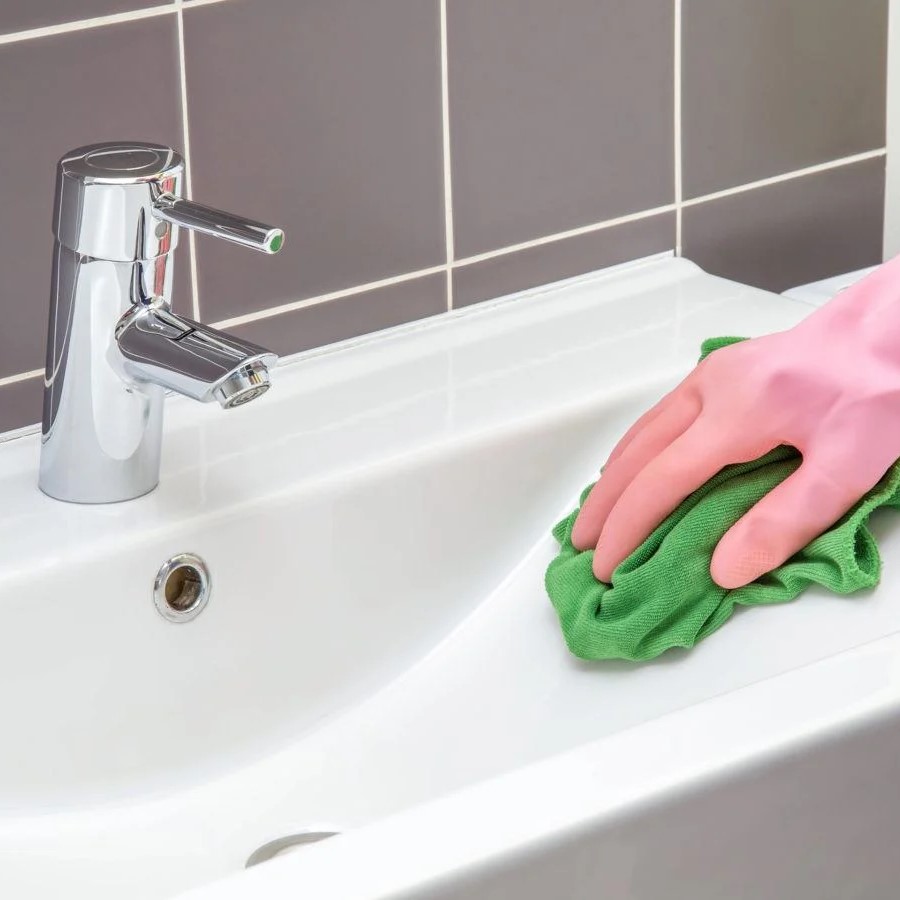 Creating a Bathroom Sink Cleaning Schedule for Optimal Results
Creating a Bathroom Sink Cleaning Schedule for Optimal Results
Establishing a consistent cleaning schedule ensures your bathroom sink remains clean and well-maintained with minimal effort. Here’s how to create an effective cleaning routine that incorporates how to clean bathroom sink practices seamlessly into your daily life.
Daily Cleaning Tasks
- Wipe Down the Sink: After each use, quickly wipe the sink basin with a damp cloth or paper towel to remove any residues.
- Dry the Faucet and Handles: Use a dry microfiber cloth to prevent water spots and maintain shine on faucets and handles.
Weekly Cleaning Routine
- Deep Clean the Basin and Fixtures: Use a non-abrasive cleaner or a natural solution to scrub the sink basin, faucet, and surrounding areas.
- Inspect and Clean Grout Lines: Check the grout lines for any signs of mold or mildew and clean them as needed.
- Polish Metallic Fixtures: Apply a mild polish to chrome or gold faucets to keep them gleaming.
Monthly Maintenance
- Clean the Drain: Perform a monthly drain cleaning using baking soda and vinegar to prevent clogs and eliminate odors.
- Check and Seal Grout: Inspect grout lines for any cracks or gaps and apply sealant if necessary to prevent moisture damage.
- Organize Cleaning Supplies: Ensure all cleaning supplies are stocked and organized for easy access during your cleaning routine.
Seasonal Deep Cleaning
- Perform an Intensive Clean: At the start of each season, conduct an intensive cleaning session to address any deep-seated stains or buildup.
- Check for Wear and Tear: Inspect the sink and fixtures for any signs of wear and replace or repair as needed.
- Refresh Protective Barriers: Reapply silicone sealant or other protective barriers to maintain the sink’s integrity and prevent damage.
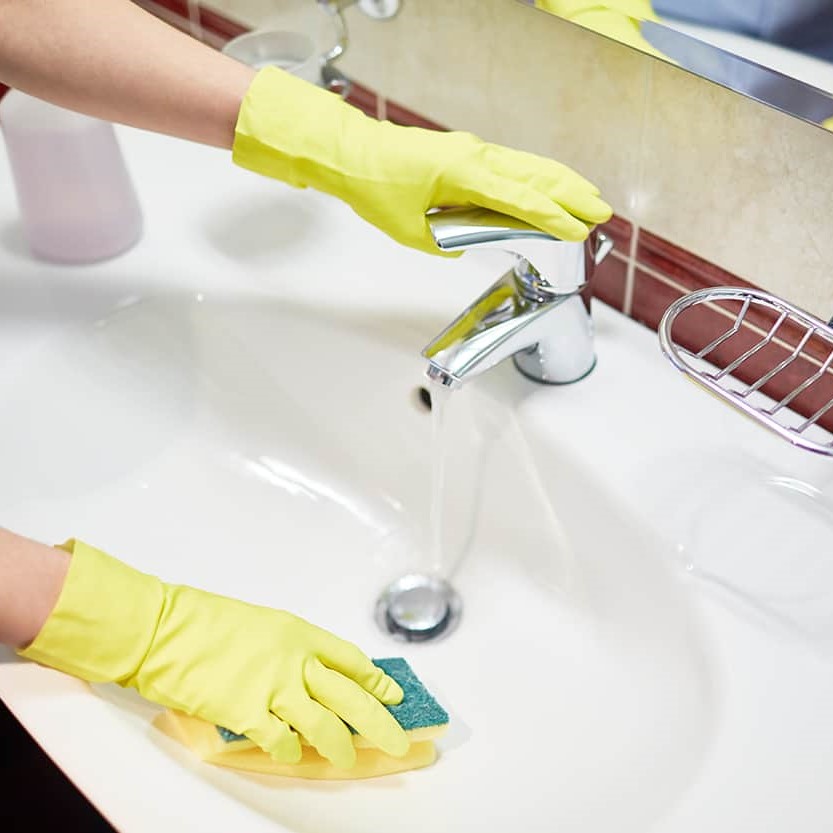 Conclusion: Enjoying a Clean and Shiny Bathroom Sink
Conclusion: Enjoying a Clean and Shiny Bathroom Sink
We’ve explored various tips on how to clean a bathroom sink effectively. From choosing the right cleaning supplies to tackling tough stains and regular upkeep, clean sinks are within reach.
To recap, gathering essential supplies is your first step. Next, follow our step-by-step guide to clean every part of your sink. Don’t forget to address any tough spots with baking soda, vinegar, or specialized cleaners. For an eco-friendly approach, opt for natural cleaning solutions—they’re just as efficient and better for the environment.
Regular maintenance is key to a long-lasting shine. Wipe down your sink daily, perform a detailed clean weekly, and stay on top of drain health to avoid clogs. Remember that preventing stains and clogs is easier than removing them. Use strainers, flush with hot water, and, importantly, avoid harsh chemicals to protect your bathroom fixtures.
Now, you know how to clean bathroom sink areas for a sparkling finish. Consistency is the secret to making this task easier and keeping your bathroom inviting and hygienic. Stick to these practices, and enjoy the satisfaction of a clean, shiny sink every day.

